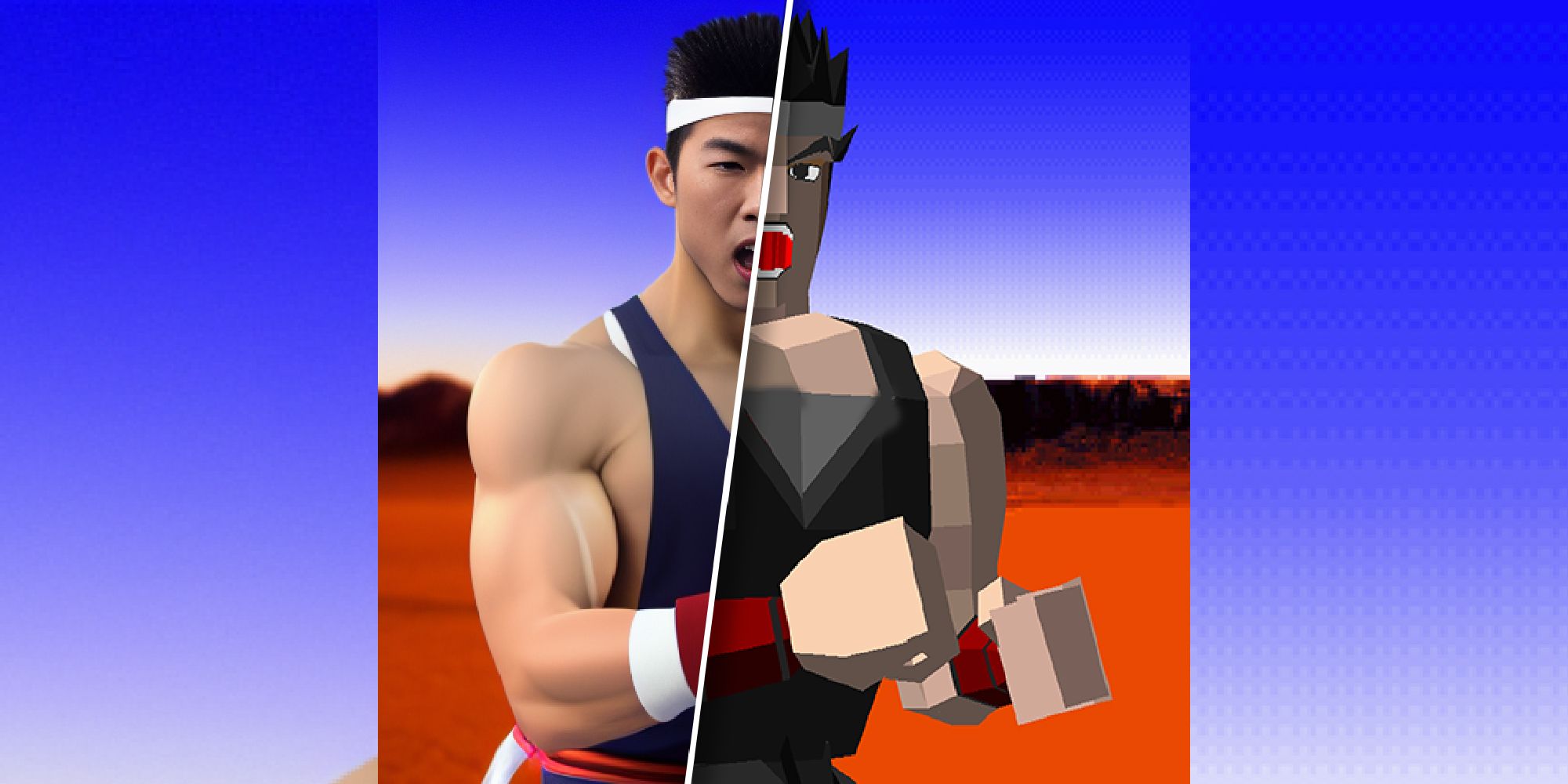It may be hard to imagine now, but for the time 1993's Virtua Fighter was groundbreaking, as its fully 3D polygonal character models looked "life-like" and made an impression for having "realistic" graphics. These were actual terms being bandied around when Sega's arcade fighting game first appeared, when video games were still mostly two-dimensional. Of course now the 3D polygons appear uber blocky and the likes of Sarah Bryant, Pai Chan, and Akira Yuki look more like action figures than actual humans. But we are in the era where we're approaching hyper-realistic character models, and with the help of AI, one artist has transformed these 1993 video game models into something far more life-like (via Ars Technica). An artist named Collin Williamson showed off images on his Twitter showing side by side comparisons of characters from the 1993 game and the same model after being run through an AI image synthesis program. The resulting image is a real transformation, just get a look at the images.
The program in question is called Stable Diffusion and Williamson had to make tweaks and adustments through a process of trial and error to get the best results. It's definitely not all the AI's work to get the final images, which do look rather impressive and a believable extrapolation from the original blocky models.
The AI image synthesiser uses an input image as a prompt, and combines it with a written prompt to produce the output image. This synthesis is the result, but Williamson also used browser-based input interface AUTOMATIC1111 to achieve his final images."Just describe the character, and img2img does its best," Williamson told Ars Technica. "Though the hardest part was simply figuring out how to describe the character's clothes."
It was trial and error as sometimes the AI would do strange things like giving characters seven fingers, the artist said, but Williamson used a technique known as 'negative prompting' whereby you tell the program to not draw "messed-up looking hands," for example, and this helps to create a more regular hand.
On Twitter, Williamson said that he had tried running characters from Virtua Fighter 2 and 3 through the program too, but he thought it's "way funnier when the source material is more abstract."
"I feel like we're maybe 10 years away from doing this kind of stuff in realtime on old games," he continued. "The future is gonna be weird."

